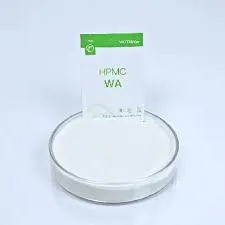
Dec . 07, 2024 11:49 Back to list
rdp powder price
Understanding the Price Dynamics of RDP Powder
RDP powder, or redispersible polymer powder, is a crucial ingredient in the construction and building materials industry. Widely utilized in cement-based formulations, RDP powder enhances the properties of mortars, adhesives, and other composite materials. As the demand for high-performance construction materials rises globally, so does the interest in the price trends of RDP powder. Understanding these price dynamics is essential for manufacturers, suppliers, and end-users alike.
Factors Influencing RDP Powder Prices
1. Raw Material Costs RDP is derived from various raw materials, predominantly vinyl acetate and ethylene. Fluctuations in the prices of these raw materials significantly impact the overall cost of RDP powder. For instance, variations in petroleum prices can directly affect the costs of its petrochemical components.
2. Production Capacity and Technology The production methods employed in creating RDP powder can also influence pricing. Advanced production technologies that enhance efficiency may lead to lower production costs. Conversely, outdated production methods could result in higher prices, affecting suppliers' pricing strategies.
3. Supply Chain Dynamics The global supply chain can experience disruptions due to geopolitical events, natural disasters, or pandemics. Such disruptions can lead to shortages or delays in the supply of RDP powder, forcing prices upward. Additionally, logistical costs, including shipping and warehousing, can add to the overall cost structure.
4. Market Demand The construction industry is a primary consumer of RDP powder. As the sector grows, especially in emerging economies, demand for RDP powder is likely to rise. Increased construction activity driven by urbanization and infrastructure development boosts demand, subsequently influencing prices.
5. Quality and Specification Variations Prices of RDP powder can also differ based on quality and specific performance characteristics required by customers. Higher-quality formulations that provide superior performance in terms of adhesion, flexibility, or water resistance may command premium prices.
Recent Trends in RDP Powder Pricing
Recent months have seen a notable increase in RDP powder prices, attributed to several interconnected factors. The post-pandemic recovery of the construction sector has led to heightened demand for construction materials, including RDP powder. Simultaneously, raw material shortages and increased shipping costs have added pressure on pricing.
rdp powder price

Moreover, manufacturers are compelled to pass on the escalating production costs to consumers, resulting in price hikes. This trend is further exacerbated by the growing focus on sustainable construction practices, which can sometimes involve more expensive, greener alternatives to traditional RDP production methods.
Impact on the Construction Sector
RDP powder is essential for various applications, including tile adhesives, plaster, and self-leveling compounds. As prices rise, construction companies may face higher material costs, which can impact profit margins. In some cases, this could lead to increased pricing of finished products, potentially slowing down project developments and overall industry growth.
Additionally, construction firms are increasingly looking at alternative solutions or substitutions to manage costs. Innovations in material science may lead to the development of new additives or binders that can fulfill similar roles as RDP powder, potentially creating competition and impacting market dynamics.
Strategies for Stakeholders
To navigate the shifting landscape of RDP powder pricing, stakeholders in the construction and manufacturing sectors should consider several strategies. First, fostering relationships with multiple suppliers could help mitigate supply risks and stabilize costs. Secondly, investing in research and development can yield alternative formulations that could provide cost-effective solutions without compromising quality.
Moreover, industry collaboration can play a pivotal role in addressing raw material supply issues and fostering innovation. By working together, manufacturers can share insights and establish more resilient supply chains.
Conclusion
Understanding the price dynamics of RDP powder is essential for stakeholders across the construction industry. By keeping abreast of the factors influencing these prices and adopting proactive strategies, manufacturers, suppliers, and construction firms can better navigate the complexities of the market. As the construction landscape continues to evolve, a keen awareness of pricing trends will empower stakeholders to make informed decisions that foster growth and sustainability.
-
Versatile Hpmc Uses in Different Industries
NewsJun.19,2025
-
Redispersible Powder's Role in Enhancing Durability of Construction Products
NewsJun.19,2025
-
Hydroxyethyl Cellulose Applications Driving Green Industrial Processes
NewsJun.19,2025
-
Exploring Different Redispersible Polymer Powder
NewsJun.19,2025
-
Choosing the Right Mortar Bonding Agent
NewsJun.19,2025
-
Applications and Significance of China Hpmc in Modern Industries
NewsJun.19,2025







